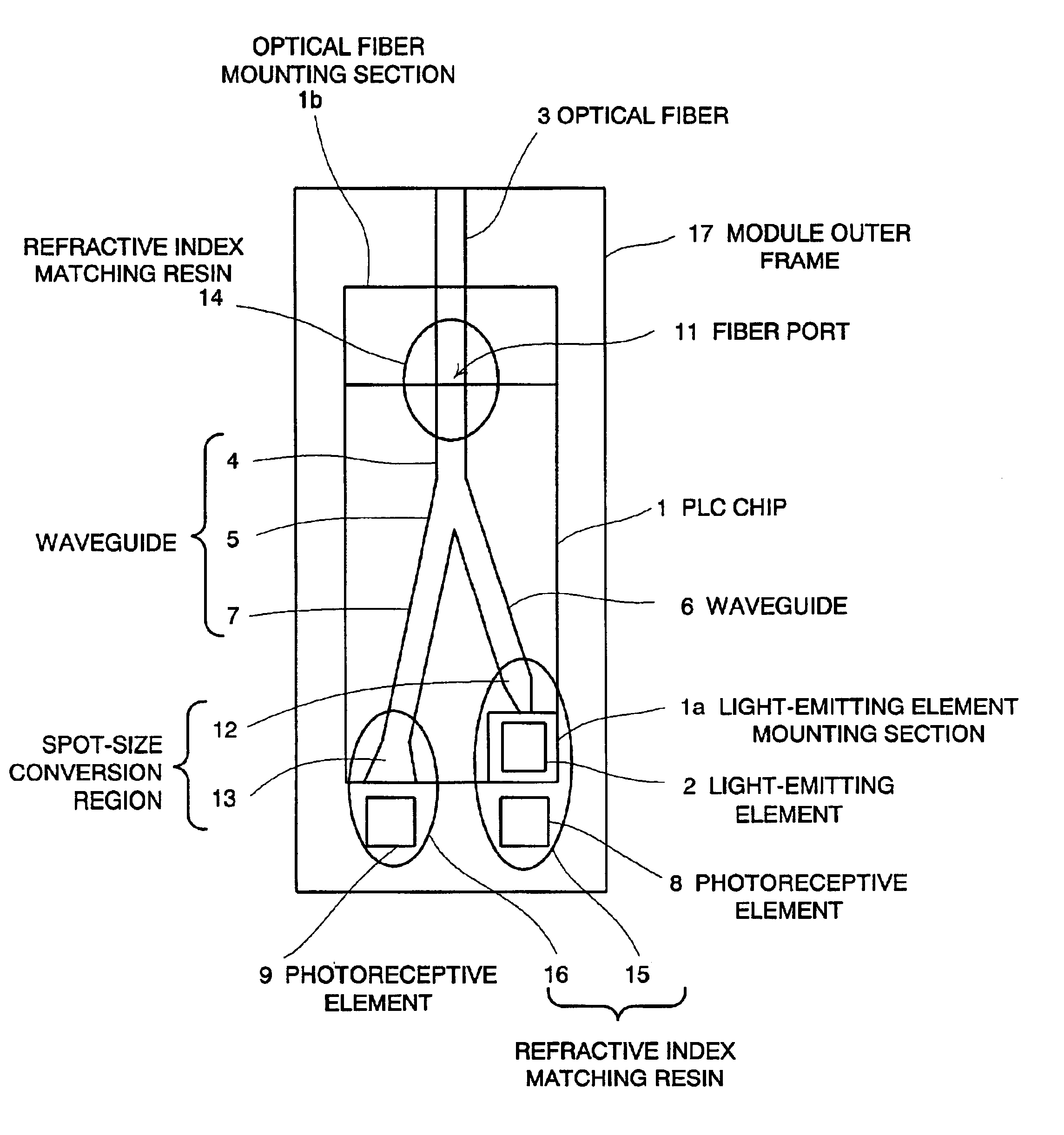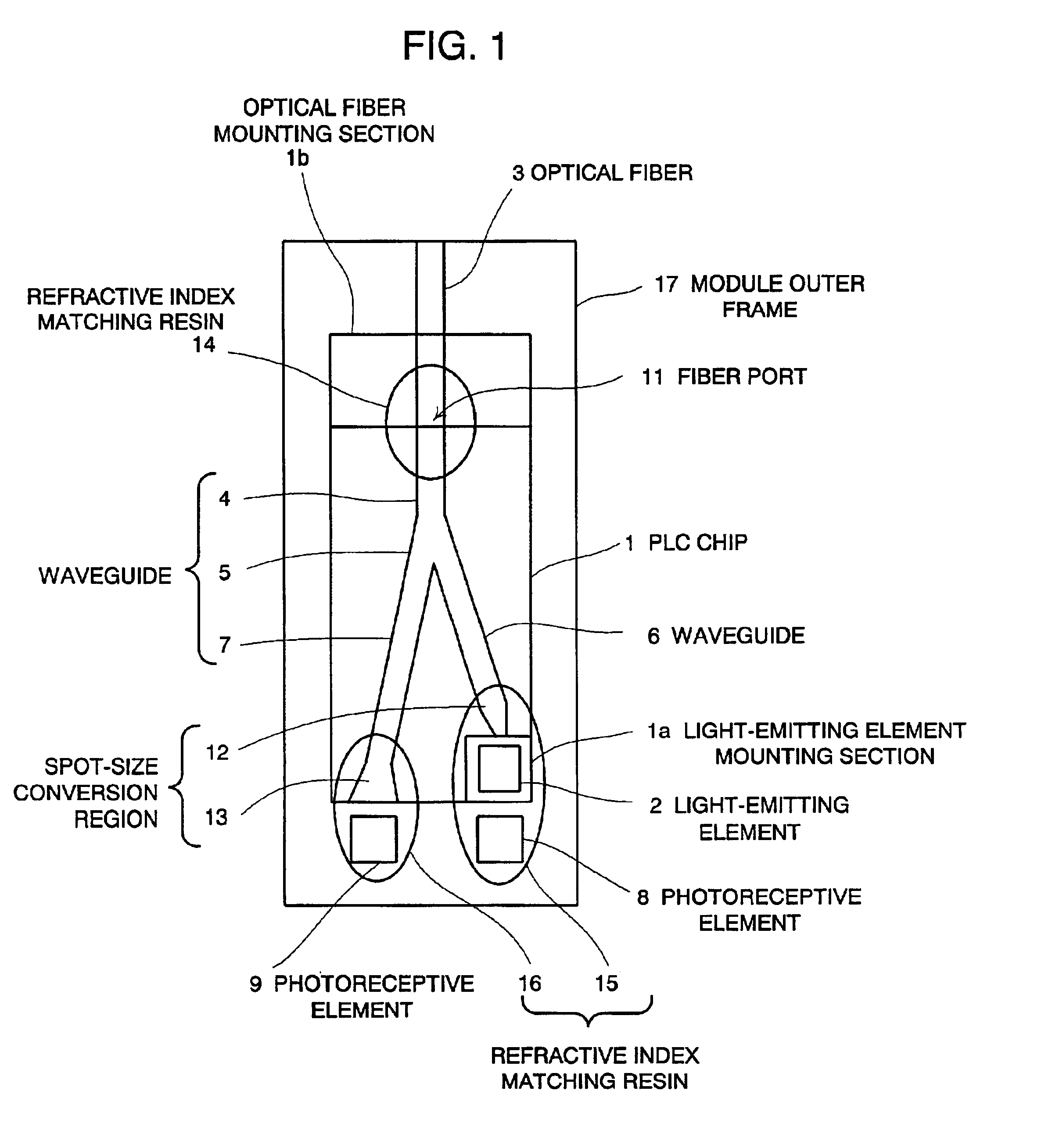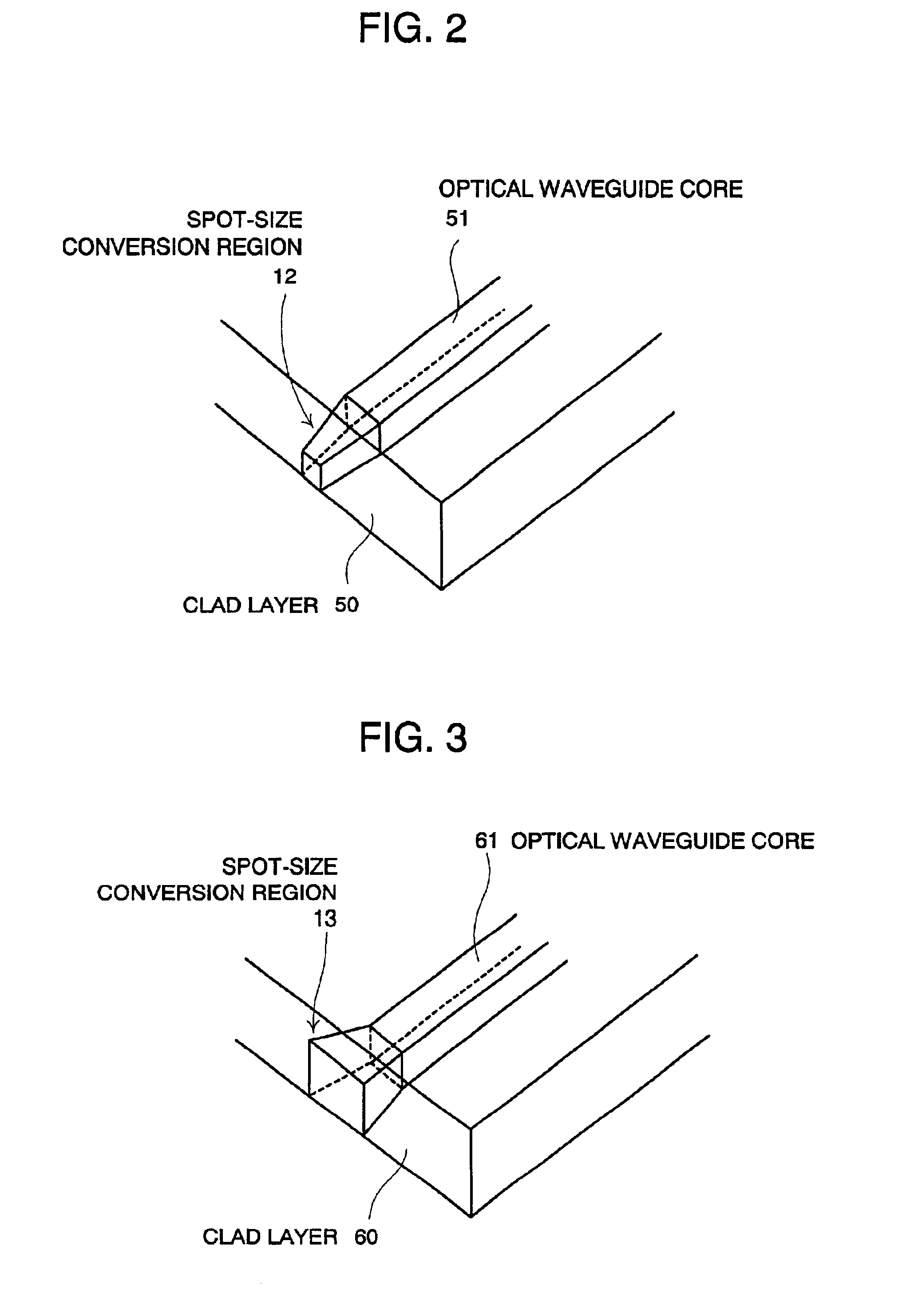Optical module
a technology of optical modules and optical couplings, applied in the field of optical modules, can solve the problems of reducing cost, increasing assembling process, optical loss, etc., and achieve the effects of reducing the width or thickness of the waveguide, reducing the loss of optical coupling, and high-efficiency optical coupling
- Summary
- Abstract
- Description
- Claims
- Application Information
AI Technical Summary
Benefits of technology
Problems solved by technology
Method used
Image
Examples
embodiment 1
(Embodiment 1)
[0052]FIG. 1 is a top plan view illustrating a schematic configuration of an optical transmitter / receiver module that is a first embodiment of the present invention. This optical transmitter / receiver module has a structure in which: a PLC chip 1 in which waveguides 4 to 7, a light-emitting element mounting section 1a and an optical fiber mounting section 1b were formed; a light-emitting element 2 such as the LD mounted on the light-emitting element mounting section 1a on the PLC chip 1; an optical fiber 3 that introduces the send light outside the module or introduces the receive light from the exterior within the module, which was mounted on the optical fiber mounting section 1b on the PLC chip 1; and photoreceptive elements 8 and 9 such as the PD were provided on a substrate and were contained within a module outer frame 17.
[0053]The waveguides 4 to 7 configure the waveguide having a symmetric Y-type branch structure as a whole. Namely, this symmetric Y-type branch w...
embodiment 2
(Embodiment 2)
[0082]FIG. 9 is a top plan view illustrating a schematic configuration of an optical transmitter / receiver module that is a second embodiment of the present invention. This optical transmitter / receiver module is a module having a wavelength division multiplex structure in which a layout of the optical active element and the optical waveguide of the structure of the foregoing first embodiment was changed to provide a WDM (Wavelength Division Multiplex) filter 31. The effect accompanying the spot-size conversion explained in the foregoing first embodiment is also similarly obtained in this embodiment; however, herein, for simplification of explanation, its explanation is omitted for convenience and only the different part from the first embodiment will be explained.
[0083]On a substrate are provided and within a module outer frame 37 are contained: a PLC chip 21 in which waveguides 24 to 27, a light-emitting element mounting section 21a and an optical fiber mounting sectio...
PUM
 Login to View More
Login to View More Abstract
Description
Claims
Application Information
 Login to View More
Login to View More - R&D
- Intellectual Property
- Life Sciences
- Materials
- Tech Scout
- Unparalleled Data Quality
- Higher Quality Content
- 60% Fewer Hallucinations
Browse by: Latest US Patents, China's latest patents, Technical Efficacy Thesaurus, Application Domain, Technology Topic, Popular Technical Reports.
© 2025 PatSnap. All rights reserved.Legal|Privacy policy|Modern Slavery Act Transparency Statement|Sitemap|About US| Contact US: help@patsnap.com



